The decline of journalism portrayed in Princeton art exhibit
-
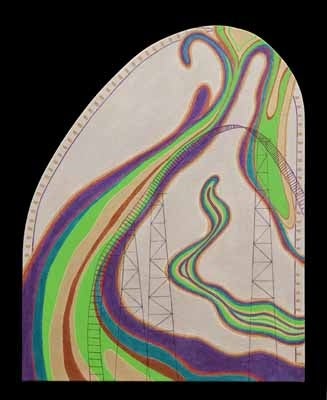
<p><span style="font-family: Tahoma, 'Sans Serif', Arial; font-size: 14px;">"Cyclone" by Marcia Annenberg</span></p>
-
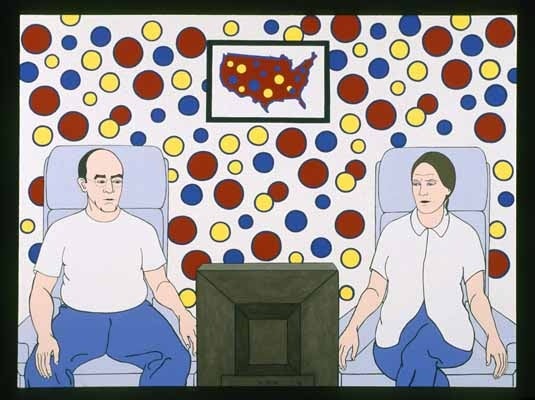
<p><span style="font-family: Tahoma, 'Sans Serif', Arial; font-size: 14px;">"Home On The Range" by <b class="x_gmail_sendername" style="font-family: Tahoma, 'Sans Serif', Arial; font-size: 14px;">Marcia Annenberg</b></span></p>
-
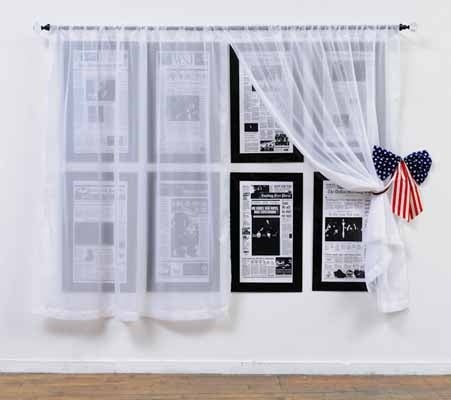
<p><span style="font-family: Tahoma, 'Sans Serif', Arial; font-size: 14px;">"No News is Good News" by Marcia Annenberg</span></p>
-
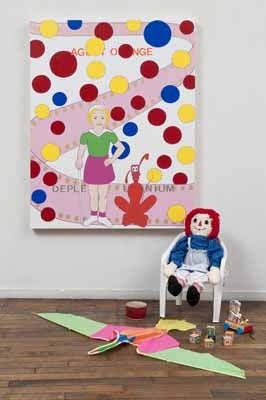
<p><span style="font-family: Tahoma, 'Sans Serif', Arial; font-size: 14px;">"What Did You Learn In School Today?" by <b class="x_gmail_sendername" style="font-family: Tahoma, 'Sans Serif', Arial; font-size: 14px;">Marcia Annenberg</b></span></p>
-
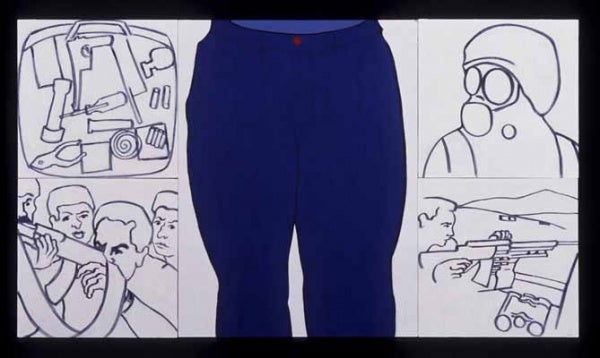
<p><span style="font-family: Tahoma, 'Sans Serif', Arial; font-size: 14px;">"White House/Your House" by Marcia Annenberg</span></p>
-
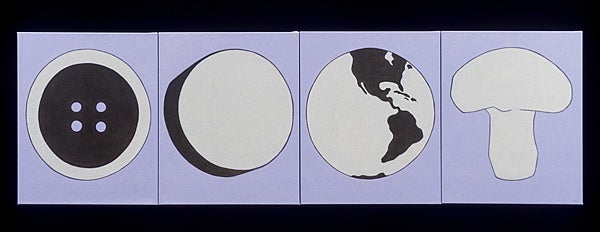
<p><span style="font-family: Tahoma, 'Sans Serif', Arial; font-size: 14px;">"Button/Mushroom" by Marcia Annenberg</span></p>
This is part of a series from Ilene Dube of The Artful Blogger.
January 1, 2012 – The biggest news on the front pages of eight of the nation’s biggest daily papers (The New York Times, Wall Street Journal, Los Angeles Times, Dallas Morning News, Washington Post, Philadelphia Inquirer, Detroit Free Press and Kansas City Star) concerns what China’s TV shows tell us about its popular culture, the Mayan projection that the world will end in 2012, changes Catholic schools face, a look back at the year that was, and – remember this? – the fiery 2012 presidential campaign.
The previous day – December 31, 2011 — the National Defense Authorization Act was signed by President Obama. Only the Dallas Morning News gave it front-page coverage – four inches below the fold. The New York Times had a tease for the story on page 22.
The NDAA extended military authority to search and seize civilian property in terror-related cases – and yet civilians were hardly aware, because the news got scant attention.
New York City-based artist Marcia Annenberg, a self-described news junkie who watches six TV news stations all day, every day, as well as following websites, blogs and other media, missed the story until a week later. “How did that skip my attention,” she recalls thinking. “That’s pretty important – and frightening, to think your free speech rights are taken away, when your data – e-mails, phone calls – can be monitored any time.”
So she sent away for January 1 print editions of the dailies mentioned above, only to learn she had not missed the stories – it hadn’t been covered.
“If I’m not a suspect, why should my data be looked at?” she asks. “The Bill of Rights is what America stands for. How do you define America when the Bill of Rights is taken away?”
In Annenberg’s multi-media work, “No News is Good News,” all eight front pages are presented behind gossamer curtains, parted to show the scant coverage, and pinned with a bow made from fabric in red, white and blue stars and stripes.
It is part of the exhibit News/Not News, on view at the Woodrow Wilson School’s Bernstein Gallery on Princeton University’s campus through February 14.
“The media is obsessed with sexuality at the expense of the coverage of actual news,” writes Annenberg, in conjunction with a large painting “White House/Your House,” depicting black-and-white line drawings of men and warfare in the periphery, and a large blue-jean clad crotch front and center.
The painting “Great American News” questions the diminishment of network news coverage. Across the canvas, the letters N-E-W-S in a red-and-blue font common to news organization logos of the 20th century — the recently folded Newsweek comes to mind — are surrounded by happy/sad drama masks, stars and stripes, implements of commerce and war, and the face of a newscaster with Afro-Asian features and bright blond hair. Her multicultural face seems to imply we’ll get the world news from her, but in fact the world seems to start and end in her face.
“Home on the Range” is a contemporary “American Gothic.” In the large acrylic a middle-aged couple, slouched on leather recliners, is fixated on the little black box, the electronic hearth, surrounded by colorful polka dots and a map of the U.S. Americans are addicted to TV and film, and the escapism it offers, Annenberg tells us.
“The map of America is all this couple knows from the local news,” says Annenberg. “We’re living in a bubble. I haven’t seen a single human interest story about a family living in Afghanistan.”
From Daumier to Picasso, from the Mexican muralists to American Social Realists, artists have responded to politics and current events. “There is always a role for artists in reacting to world events and culture,” said Annenberg, a distant relation to Walter Annenberg, one-time owner of the Philadelphia Inquirer who went on to found TV Guide and Seventeen magazine. “I never met them,” Annenberg said of her media mogul relatives. “I went to city schools and worked all my life for everything I have. But maybe my interest in news is genetic.”
Raised in Manhattan, Annenberg’s parents – a lawyer and fine-art photographer — were also news junkies and subscribed to I.F. Stone’s Weekly, the independent investigative newsletter from Washington, D.C., that campaigned against McCarthyism, racial inequality and the Vietnam War.
Today, even though there’s more news available online, “a lot of people still tune into networks, and there’s a lot missing,” said Annenberg. “A lot of Americans don’t search for online news. One-third may get it from the internet, but what about those who don’t search – how do they get the story?”
She points to Fox News’ “Around the World in 80 Seconds.” “How can anyone get an understanding of the world in 80 seconds?” she asked. “It’s an issue of national security. That’s why 9/11 caught America by surprise. The majority had never heard of Osama Bin Laden.”
And mainstream media is only getting worse, she contends. With limited budgets and staff, some news stories are left out altogether. “Even though there are more channels, there’s a decline in coverage – who, what, where, when and why has been degraded. The distinction between news and opinion has been blurred – most people can’t make the distinction.”
Climate change is an example. “It’s been studied for 50 years, it’s documented by scientists, it’s not a matter of opinion – but people don’t know that because it’s not covered. This will affect our children and grandchildren. It’s so much more important than who movie stars are dating.”
“Button/Mushroom” is a four-panel painting about nuclear proliferation. The button mushroom, we learn, is cultivated in more than 70 countries and proliferates readily – making the edible fungus a metaphor for the nuclear proliferation that would consume our planet. Would… or will? If we continue to dilute, or even obliterate, our news media, escaping into boob tubes or Facebook or Pinterest, this could surely happen.
News/Not News is on view at the Bernstein Gallery, Woodrow Wilson School, Robertson Hall, lower level, Princeton University, through February 14. Hours: Monday-Firday 8:30 a.m.-6 p.m. Artist reception and talk: Sunday, February 3, 3-5 p.m.
The Artful Blogger is written by Ilene Dube and offers a look inside the art world of the greater Princeton area. Ilene Dube is an award-winning arts writer and editor, as well as an artist, curator and activist for the arts.
WHYY is your source for fact-based, in-depth journalism and information. As a nonprofit organization, we rely on financial support from readers like you. Please give today.




